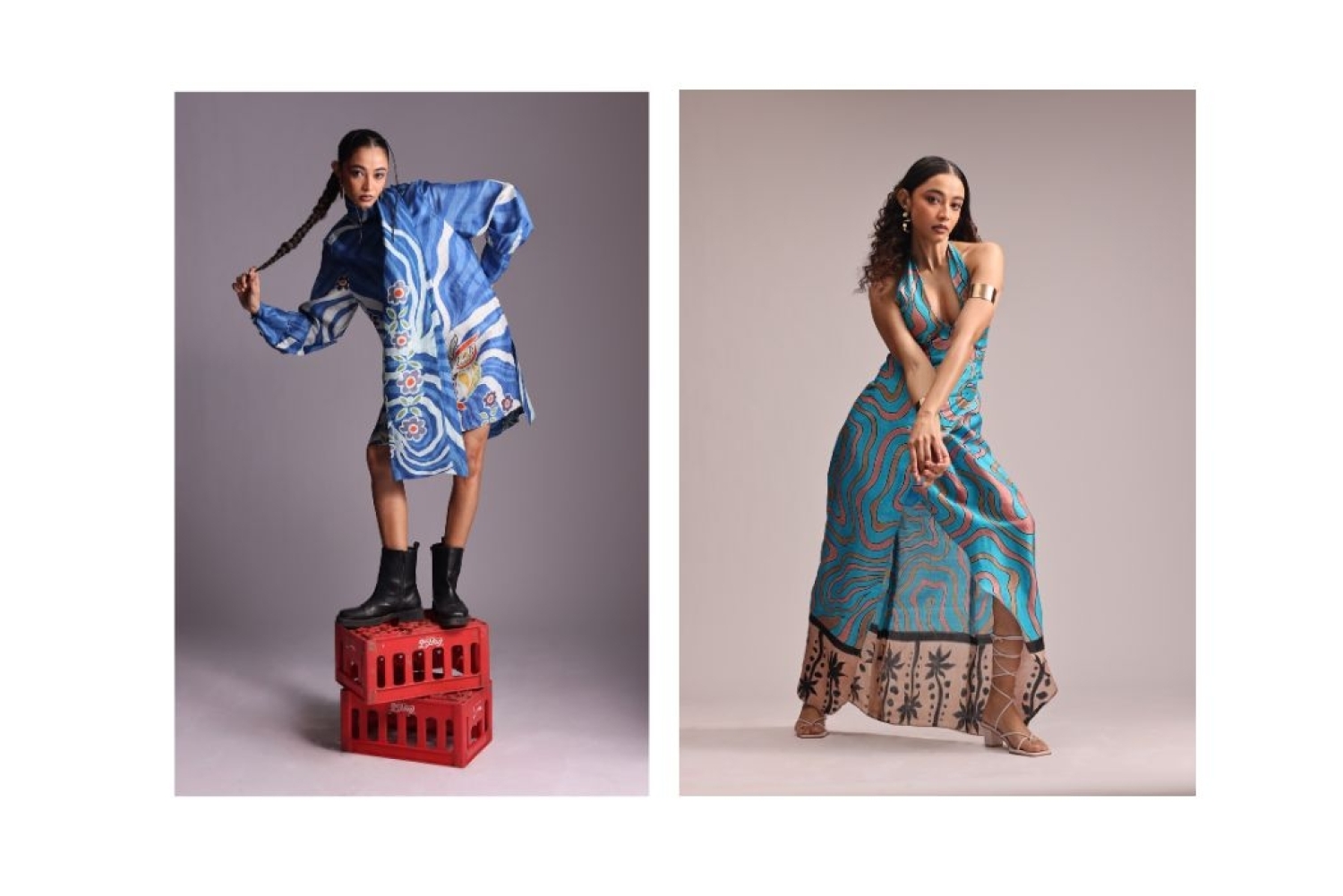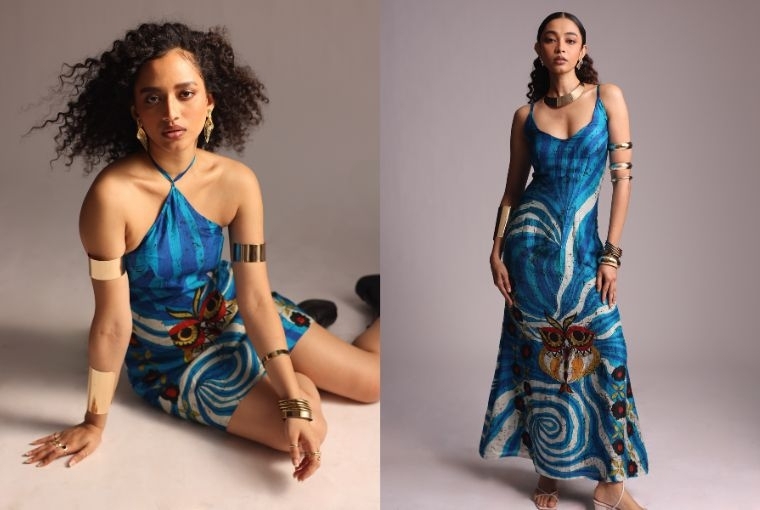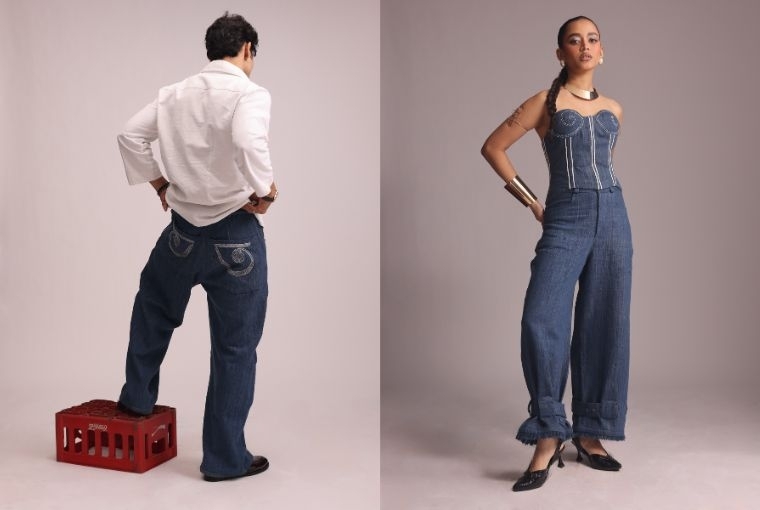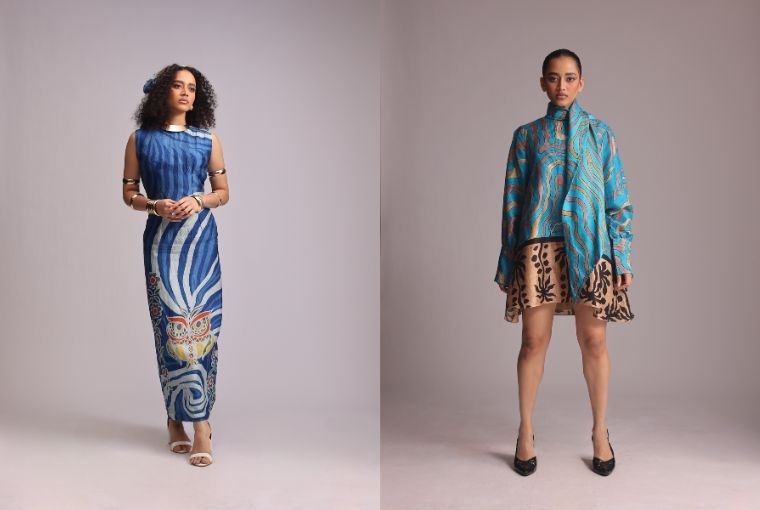

The journey of Tagore by Nandini has been guided by a simple but powerful belief: understanding that Bengal’s centuries-old textile traditions Jamdani, Kantha, Murshidabadi silk, Batik, and hand-painted fabrics are not relics of the past. They are living stories that deserve to be celebrated, reinterpreted, and worn today. Through this venture, they hope to reclaim these crafts and bring them into the rhythm of modern fashion, while giving artisans renewed dignity and a stronger voice in the global marketplace.
Founder Ankit Ram Pal always felt a sense of distance from his roots, and was struck by Bengal's unchanging essence and timeless quality each time he returned home. This went on to form the foundations of Tagore by Nandini, a collaborative effort started by Ankit and his mother, Nandini Pal, an effort to bridge personal disconnection, while also representing Bengal artistry as something that belongs to daily life. We spoke to them about the artistic traditions of Bengal, their choice of bright colours, and what luxury means to them.
The Inspiration and Journey
The inspiration for Tagore by Nandini really comes from my mother, Nandini. She has always been deeply passionate about embroidery and began a small reselling business years ago. To our surprise, her work found an enthusiastic audience in international markets. That was an eye-opening moment for us, it showed how outside India, our crafts were valued as something rare and precious, yet within India they were often overlooked. At the time, these crafts like Batik and Kantha embroidery were mostly confined to sarees and dupattas. We felt there was a need to reimagine these crafts in contemporary silhouettes making them aspirational, versatile, and timeless.
As a probashi Bangali, I (Ankit) have always felt a sense of distance from my roots. Every time I returned to Bengal, especially Kolkata, I was struck by its unchanging essence, its timeless quality. That constancy became a powerful inspiration for the brand. With Tagore by Nandini, our intention has been to bridge that personal disconnection, while also presenting Bengal’s artistry as something that belongs everywhere from daily life to celebrations so that each piece makes an ordinary moment feel extraordinary.
At the same time, the idea for the brand was born from a discomfort with how our culture was often represented, sometimes misappropriated, sometimes simplified, and rarely given the platform it truly deserves. We wanted to shift that narrative by working directly with the masters of these crafts and executing them at the highest level possible.
Our journey has been guided by a simple but powerful belief: Bengal’s centuries-old textile traditions Jamdani, Kantha, Murshidabadi silk, Batik, and hand-painted fabrics are not relics of the past. They are living stories that deserve to be celebrated, reinterpreted, and worn today. Through Tagore by Nandini, we hope to reclaim these crafts and bring them into the rhythm of modern fashion, while giving artisans renewed dignity and a stronger voice in the global marketplace.

Design Sensibility
I remember my mother once showing me a 70-year-old Kantha quilt stitched by my grandmother. That was my first introduction to Kantha. What struck me was that the motifs weren’t ornamental, they were autobiographical. Wedding clothes, everyday wear, and festive wear all stitched into one cloth. That discovery changed the way I understood design. It made me realise that Bengal’s art was never about decoration; it was about life itself. That’s what Shantiniketan means to us, the courage to see the everyday as worthy of art. When we create silhouettes, we think of clothes not as museum pieces but as something that should be lived in, danced in, remembered in. Being from Birbhum, where Tagore set up Shantiniketan, I guess that sensibility is in the blood.
Collaboration
You know what people always say when they first discover our brand? 'I have never seen Batik like this before.' That has become synonymous to us thanks to the artisans we work with. Take our latest autumn-winter collection. Those prints? Originally designed for digital printing, way before we even thought about Batik. When I first went to Shrirampur and met the artisans, they were mostly doing sarees. I showed them our prints and they got it instantly. 'We can do this three different ways,' they said. So we tried all three. The acid batik method they suggested? Blew our original digital design out of the water. When they saw the final lookbook, they were thrilled. Kept asking for copies to show their friends, posting it everywhere. You could see how proud they were to see their work on such a high level. That’s why every single hand tag has the artisan’s name and hours spent making it – they deserve that credit. What started with those Shrirampur artisans became the gateway to an entire ecosystem of craftspeople. Through their connections and recommendations, we discovered handloom denim weavers, block printers, screen printers, and craft clusters scattered across Bengal. One workshop visit opened doors to countless collaborations, organically building our artisan network.

Bright Colours and Patterns
For us, colour and pattern are not just aesthetic choices, but carriers of memory and meaning. Our AW ’25 collection, From the Bay of Bengal, draws inspiration from the sea as both muse and memory. The Bay was once a thriving gateway of trade and artistry, carrying Bengal’s textiles like muslins, silks, and jamdanis to faraway shores. We wanted to translate that legacy into effortless resort wear that feels both timeless and contemporary. The palette flows from the sea itself: indigo, salt white, and tidal blues, while the crafts batik from Srirampur, Jamdani from Phulia, and hand-painted motifs echo the rhythm of waves and the flight of seabirds. The silhouettes reflect the ease of coastal living yet remain deeply rooted in heritage. Every piece is handmade, from the weaving and batik prints to the embroidery and stitching, ensuring that each detail reflects the richness of Bengal’s artistry.
Interpreting Luxury
For us, true luxury is rooted in humanness. It’s not just about creating something beautiful to wear, but about pieces that carry history, culture, and soul. Every garment is handmade, shaped by centuries-old traditions and the hands of artisans who keep them alive. That connection between craft, story, and the person wearing it, is what makes luxury meaningful and lasting.
Balancing Heritage and Modernity
The balance comes naturally when you respect the technique but play with the form. We never touch the authenticity of the craft itself. What changes is how it’s worn, where it’s worn, and who gets to wear it. Batik, for instance, is usually seen on sarees and men's half shirts with the iconic crack design all over. We’ve turned it into mini and maxi dresses. The same with Kantha from quilts to jackets, and Jamdani from drapes to gowns. It taught me that balance isn’t about preservation versus disruption, it’s about trust. We trust their years of practice; they trust our curiosity. Somewhere in that dialogue, the modern and the traditional stop being opposites and begin to complement each other. The most successful pieces are those where you can't tell where heritage ends and modernity begins. They just feel right like they've always existed.

The Future
The future feels exciting for us. We’ve recently signed up with five stockists, taking Bengal’s crafts to a wider global audience. Creatively, we’re exploring batik with new color palettes for SS26, pushing the craft in fresh ways. At the same time, we’re working on a capsule of one-of-a-kind pieces made from vintage silk sarees, old denims, and deadstock fabrics, combined with hand embroidery. We’re also becoming almost obsessive about fit by refining cuts, experimenting with proportions, and offering sizes up to 6XL. The future is clear: to bring Bengal to the world.
Words Neeraja Srinivasan
Date 16-10-2025